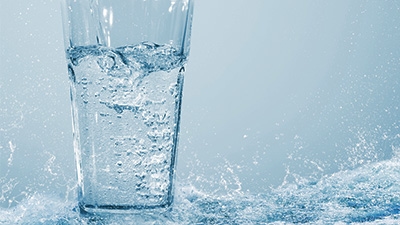Having clean water for cooking, drinking, and bathing is something many people take for granted. As a matter of fact, an estimated 63 million people in the United States were exposed to unsafe water at some point over the last 10 years. This poor water quality may stem from a variety of issues including bacteria in wells and municipal water supplies, pollution, or the deterioration of pipes.
No matter what the cause, addressing an unsafe supply of water is imperative. Fortunately, many households are using beneficial water treatment systems, such as water softeners and reverse osmosis systems.
Even though they are becoming common in homes, most people do not understand the differences between the benefits of softeners and reverse osmosis systems. This guide will explain the differences and help you determine which water treatment is right for you and your home.
Water Softeners Condition Water
One of the first things you should know is that water softeners condition water, meaning they change the balance of minerals in the water. The conditioning process occurs through ionization to replace calcium and magnesium with sodium.
Calcium and magnesium are both hard elements. If these elements are found in your water supply, you will have hard water, which can cause many problems in your home. Hard water causes the following issues:
- Mineral buildup on fixtures
- Heavy buildup on tubs, sinks, and showers
- Dull, discolored laundry
- Spotty glasses and dirty dishes
- Dry, itchy skin
- Dry hair
- Chronic plumbing clogs
Preventing the above issues is possible by removing the hard minerals (calcium and magnesium) and replacing them with a softer element (sodium).
Reverse Osmosis Systems Filter Water
While a water softener conditions water, a reverse osmosis system filters the water. This system filters out harmful minerals, sediment, and bacteria.
The system is so effective because it uses a filter with a pore size of 0.0001 microns, meaning it is capable of filtering out numerous small particles and bacteria, including hepatitis A, salmonella, and many viruses. Even if it looks clear, water may contain these dangerous minerals and bacteria that are harmful to your family's health.
Not only will a reverse osmosis system remove sediment, bacteria, and viruses from your water, but it can also filter the water to the point where it tastes better. Of course, because it is effective for removing most sediments and minerals, a reverse osmosis system can also be used if your home has hard water.
Which Is Right for You?
Even after learning the main differences between a water softener and a reverse osmosis system, you may still be wondering which option is right for your home's water supply and your family's needs.
Because both are capable of removing the minerals that cause hard water, choosing one can be difficult. However, it is important to remember that both have their own pros and cons.
For example, water from your tap can have an unpleasant taste whether it is hard or not. A water softener and a reverse osmosis system will remove the hard water minerals, but the water softener will add sodium to the water, which can affect the taste.
Also, if you are on a low-sodium diet because of high blood pressure or other cardiovascular issues, a reverse osmosis system may be a better option. With this method, the water is purified without the addition of sodium.
Finally, many households choose to install both a water softener and a reverse osmosis system. This ensures your underlying hard water issue is addressed, protecting your plumbing fixtures and pipes while improving the health and overall taste of your water supply.
For more information on water softeners and reverse osmosis systems, contact Hague Quality Water of Kansas City, Inc. today.

